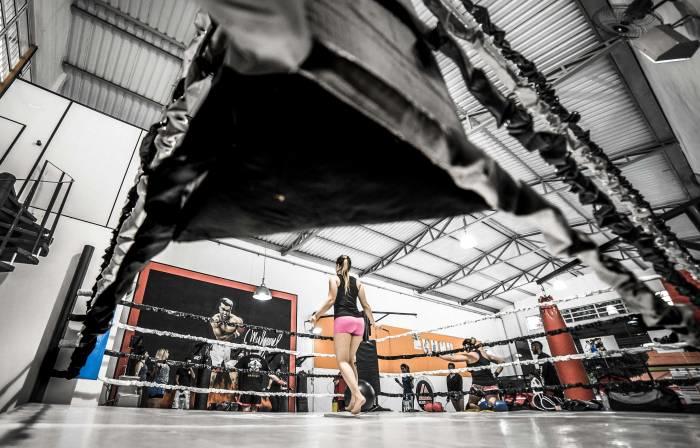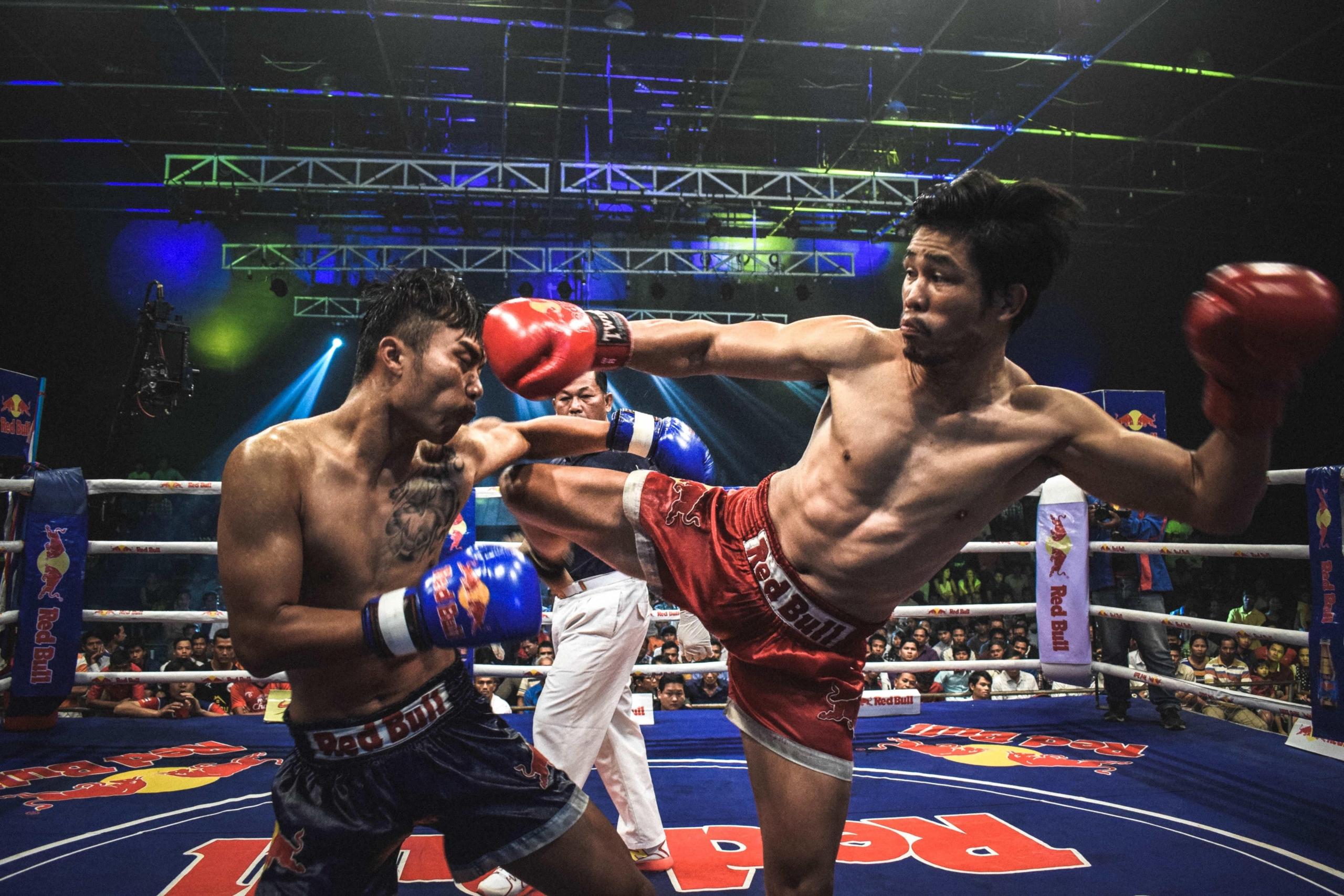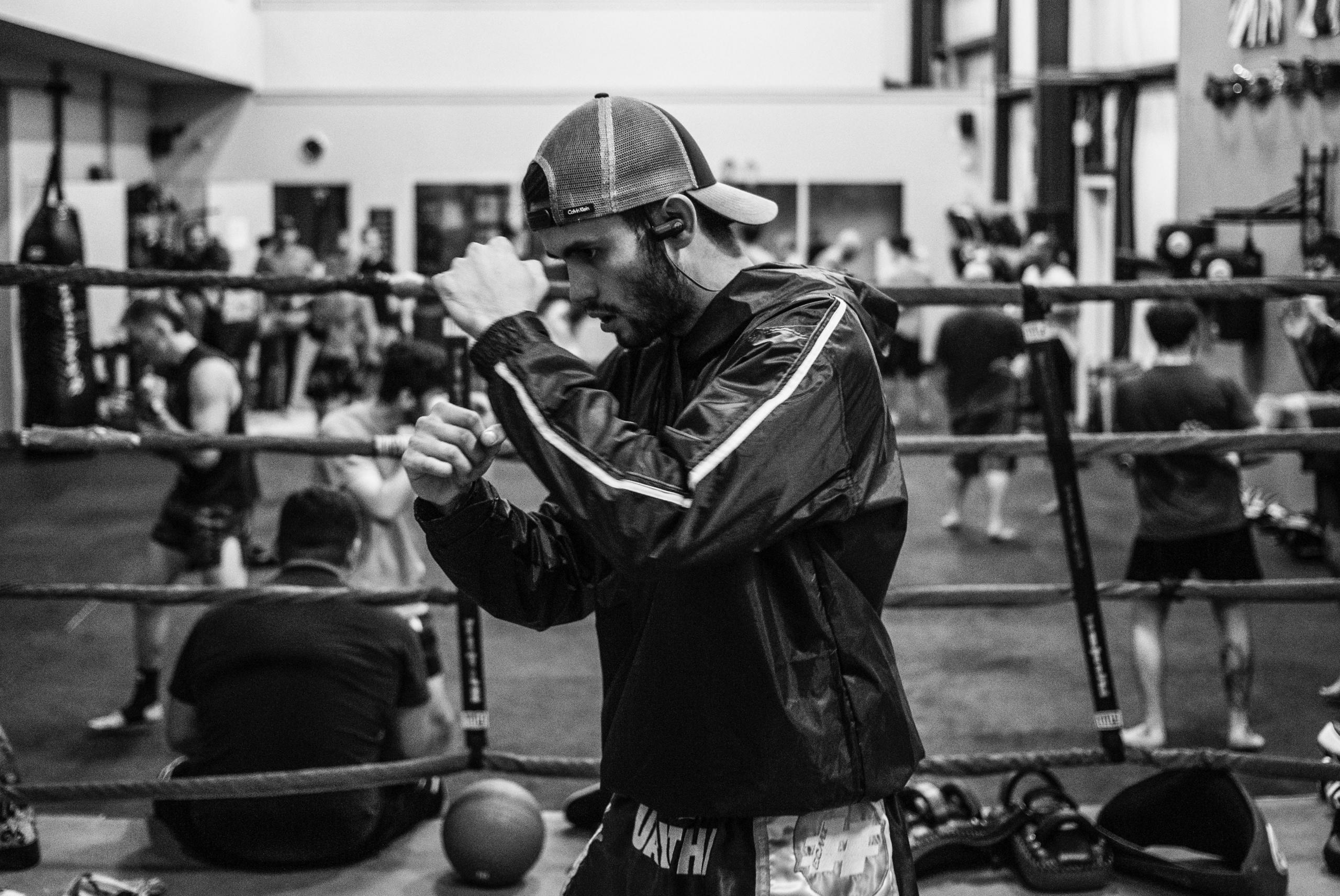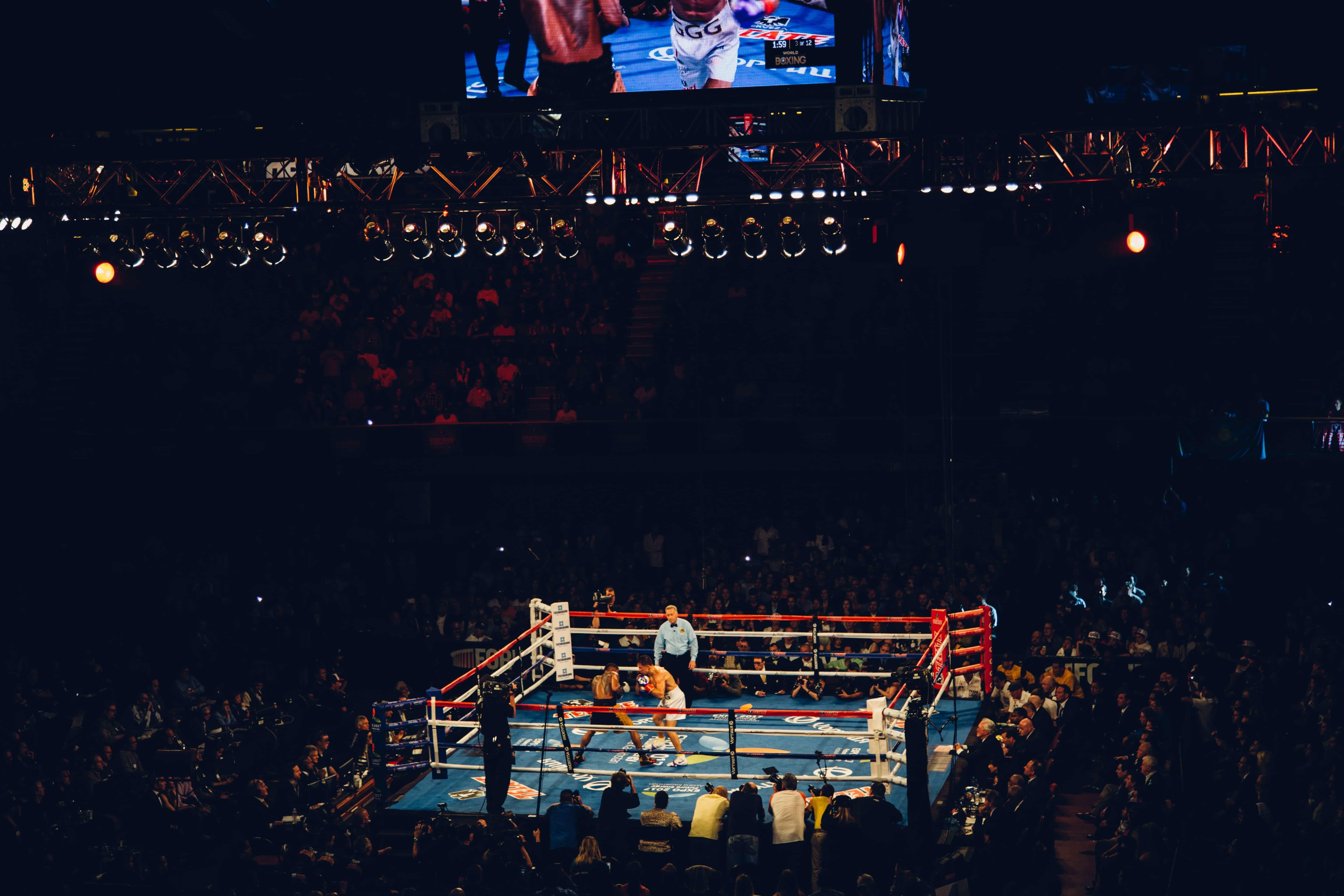The sport that we call ‘kickboxing’ actually has a long and complex history, to the extent that it is difficult to call it a specific sport at all.
Most of the countries that play it have a different set of rules – whilst the names that they give to the sport differ wildly too.
So, if you were struggling with which style of kickboxing to go for – either for your physical fitness or for your interest in martial arts training – then we understand. It isn’t necessarily straightforward for those not in the know.
But here we’ll look at the three main types of kickboxing that you are likely to find in the US. And whilst we’ve added a fourth – in which you might be a little more interested – these three are the major styles of kickboxing across the world today.
Well respected by fighters all across the globe, these types of martial arts use all parts of the body to inflict damage and points.
Concentration and dedication are the building blocks for any fighter, especially in this sport where a KO is always around the corner! Of course, rules must always be respected!
So, let’s learn something: it’s important to be prepared before you step into the ring!

What Precisely is Kickboxing, Then?
When you see ‘kickboxing’ advertised in a class at the gym, it is worth finding out what sort of kickboxing they are referring to.
While there is a specific sport that goes under this name – with a whole load of variations including Japanese, Dutch, and American kickboxing – it is also a generic term for any martial art that uses both the hands and feet, both punches and kicks. Not really very precise at all.
This is the thing. Because whilst going to the boxing gym for fitness kickboxing might sound appealing, sparring in Muay Thai boxing may well sound a little less fun. We’ll come to that precise style – which uses elbows and knees too – later on.
A Generic Term.
But kickboxing begins as a generic term – one that includes everything from taekwondo to full contact karate, Brazilian jiu-jitsu to mixed martial arts, kung fu to British kickboxing. Each of these individual fighting styles has its own set of rules – and very rarely do fighters from different styles fight against each other.
This hasn’t always been true, however. During the sport’s relatively brief formal history, the different styles have come about through their contact – literally – with other martial arts.
Only since the sixties have different styles we now know as kickboxing – such as the American and the Dutch, for example – developed. And, now, the style that most of us know as ‘kickboxing’ per se, is the American variant.
With the establishment of institutions such as the International Kickboxing Federation, a global set of formal rules were developed that promoted competition and brought the sport into the public eye in the west.
Now, of course, you’ll find kickboxing classes all over the place. And whilst a lot of people learn the sport to take part in proper competitive bouts, most use it for the great workout it offers – for strength conditioning and for improving stamina, self-confidence, and a general fitness level.
(You can read more, by the way, on the health benefits of kickboxing in another article.)
Get out-of-the-box boxing classes here.

American Kickboxing: A Bit of History.
Kickboxing itself started, we can say, in Japan in the 1950s. Whilst karate was widely practised and publicly enjoyed, it wasn’t much of a thing at the time to make actual contact with your opponent.
This changed when Tatsuo Yamada decided to bring Muay Thai into the ring. With the combination of the full contact elements of Muay Thai and the grace and dynamism of karate, a new style was born.
This was kickboxing – and the problems of definition, formal rules, and style were born right there with it. With each fighter taking different bits and bobs from the two different styles, it was never exceptionally clear – in the first days at least – which moves were allowed and which weren’t.
Kickboxing’s first ruling body was set up in Japan in 1966 and, after this, the sport went global. By this we mean, it went to those countries primarily that did not already have an established tradition of martial arts – such as the US, where this mix of karate and Muay Thai became hugely popular.
Find good boxing weight classes here on Superprof.
The Rules of American Kickboxing.
Let’s take American kickboxing as the fighting style to look at in a bit of depth, as this is what we generally are referring to when we talk about kickboxing in the US. Here's a full-blown explanation of the kickboxing rules too.
In American kickboxing, the emphasis is on reflexes and agility, and, as such, the ring is kept quite small to ensure close contact between the fighters.
Where American kickboxing differs from other forms of kickboxing is that you are limited to the use of fists and feet and you are prohibited from using the low kick. People have said that this rule – no kicks below the waist – is a deliberate attempt by promoters to ensure that fighters perform dramatic high kicks. The torso and head are the only legitimate targets for strikes – and no throwing is allowed.
American kickboxing developed out of the Japanese style of full-contact karate and the western art of boxing – during the sixties and the seventies.
Here are the biggest names in kickboxing.


French Kickboxing, Savate, or Boxe Française.
In comparison, savate or French kickboxing has its own distinct tradition. Unlike many of the other kickboxing styles in the west, it is not based on an Asian martial arts technique. Rather, it is a specifically French phenomenon dating back to the nineteenth century.
That means that you won’t find savate everywhere in the UK. Unlike here in the US – and the hugely popular Muay Thai – French kickboxing is a little more niche.
Whilst that doesn’t mean you won’t find it, it’s a fact that is important to remember.
A Distinct Sport.
Savate comes out of two traditions: the style of hand-to-hand street fighting that was popular across France in the nineteenth century and traditional English boxing.
Whilst it came to be a respectable sport in the 1920s, when it featured in the Olympic Games, like all folk sports the rules differed from region to region in France. Whilst some traditions favoured open-hand slaps, others developed rules and fighting techniques that permitted the knee strike and strikes to the groin. Punching was not necessarily allowed because, under French law, this was seen as a weapon.
In France, originally, the kick – including low kicks – was the most important weapon. And it wasn’t until French fighters had organised bouts with English boxers that savate, as we know it now, was born.
What to Expect in the Ring.
Whereas American kickboxing is close contact, savate demands a bit of distance between the fighters. It’s actually thought of as ‘fencing without the swords’, as it has developed into a style with elegance, thought, and athletic moves: the style favours excellent footwork, jumps, and movements.
In the ring, savate fighters wear special shoes that allow kicks with the toes. The roundhouse kick, the reverse, and the shin kick are all popular moves for the feet, which it involves familiar moves with the fists too: the uppercut, the jab, and the cross.
When fought well, it is actually a beautiful spectacle. And if you are looking for a total body workout, savate is the place to come.
Check out our beginner's guide to kickboxing!
And Muay Thai Kickboxing – What Is That?
Of all the different styles of kickboxing found in southeast Asia – Pradal Serey in Cambodia and the ‘Burmese’ or Lethwei style from Myanmar – Muay Thai has become the most popular in the western world.
Ascribe to it historical reasons, perhaps – as Muay Thai, as you’ve seen, was one of the great inspirations behind what we call kickboxing generically these days. It’s a combat sport that uses shins, knees and elbows, fists, and the clinch or hold.
Muay Thai is almost as popular in the UK as American kickboxing. Yet, given the intense contact that it requires, injury is pretty common.

Learning how to kickbox
Your hand-eye coordination and your footwork are essential tools in your journey to becoming a force to be reckoned with!US boxing is not only there to let off steam: the athlete must understand the methods of combat and train regularly and with high intensity to get the famous black belt, so desired by neophytes of boxing. A great technique will be the assurance of winning a few extra points and impressing the jury in the amateur or professional boxing fight.
Here is a small non-exhaustive list of techniques used by American kickboxers:
- Punching techniques: uppercut, direct, hook, back fist, overcut, jump-punch,
- Classic kicking techniques: side kick, front kick, reverse kick, back kick, sweeping, hammer kick,
- Returning or flying kicking techniques: front-kick jumping, side-kick jumping, hook-kick spinning, back-kick spinning, and back-kick jumping.
If you have already done other boxing or Asian martial arts, you will logically know all these techniques of American boxing!
Above all, do not forget to study, in addition to combat techniques, the defence techniques, crucial if you don't want to be knocked out early in the fight.
Passive defence and active defence will be useful to easily counter the best offensive techniques of your opponent and to earn extra points every round. With a good counter, you can destabilize the opponent and take the lead in just a few seconds.
Beginners can be inspired by the greatest in their particular sport by going to see for themselves their first professional boxing fight! It always beats Pay-per-view!
There are many places that you can visit in order to study the different techniques which you can later add to your arsenal!
Elbows and Knees.
The main difference between kickboxing and its Thai variety – ‘Muay Thai’, by the way, literally just means ‘Thai boxing’ – is in its use of lots of different parts of the body. You are not just limited to feet and fists as you are in French, American and western kickboxing more generally.
In the same way, Muay Thai is not a sport that has been refined into something gentler and more palatable for a general audience. It remains intense, full contact and the risk of injury is high: you really need to be in exceptional physical fitness to perform it well.
Check out the gear you'll need for kickboxing!
Kickboxing for Fitness.
Whilst these are the three main styles, a lot of people these days prefer to do kickboxing just for fitness. By that we mean, rather than actually sparring, practising the moves in the gym.
Whichever you prefer – the real fight or the fitness regime – both are amazing fun. So, give it a go!
Find out the health benefits of kickboxing!

Where Can I learn KickBoxing?
What if you could train with some of the best kickboxing teachers in the country?
There are many places where one can learn and sharpen their skills:
- a Martial arts dojo
- a Private boxing club
- a gym or training facility
- an agency specialised in this sport
- a personal trainer at home
- a community center or rec center that might offer weekly courses
- a specialised Full contact American Boxing association
There are a number of gyms and fitness classes that offer kickboxing, Jiu Jitsu, Muay thai kickboxing or even fitness kickboxing classes which offer a great and intense cardiovascular workout to help you get in shape. Besides being a great workout, learning kickboxing also helps you learn self-defence.
Of course, it is clear that having a teacher come to your home offers the possibility to advance quickly and at your own pace! The ability to choose from a tailored training regime which can focus on your needs whether beginner, amateur or professional! On Superprof, the average cost of one hour of training is $42,99, and this can be done directly in your home or at a place of your choosing!
Leg training, footwork, bag work and most importantly Self-confidence; are the skills learnt in this art of fighting. Did you know that 92% of our tutors offer the first lesson for free? So why not get a free course going to see if kickboxing is the sport and lifestyle for you?
You can also have a look on Superprof for some kickboxing coaches that are offering their services in your area. You are bound to find some affordable options.
So get out your wrap, gloves and mouthguard and get in the ring. It's time for your first lesson!















